French Polynesia: Making Sense of Anchoring Restrictions
Canadian cruisers Brent Crack and Mary Bevan are crossing the South Pacific. As they have made their way through the various island chains of French Polynesia they found a complex situation regarding anchoring and mooring restrictions. In this report, Brent outlines their experiences and provides some useful tips and updates for those following in their wake.
Published 2 years ago
Anchoring in French Polynesia has been an exercise in frustration. Government rules and local expectations have been challenging to determine and in some cases, simply not practical.
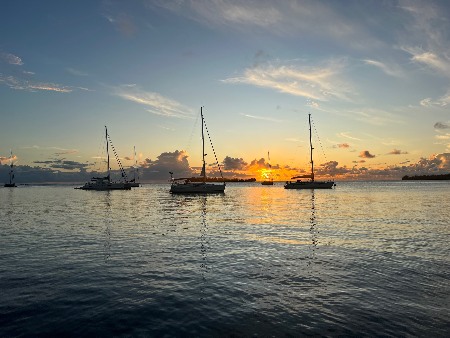

By way of background – we are long term, long distance cruisers who believe in not leaving a wake with the local communities. Quite honestly, while we are often viewed as non conformists we are strong rule followers. If you are a person who is willing to commonly bend or stretch the rules, this article probably does not apply to you. Keep reading though as you may get some insight.
Anchoring restrictions
French Polynesia has been putting in some significant anchoring restrictions in local years. In some locations, nearly all anchoring is prohibited and moorings are mandatory, while in others it is still a bit of a free for all. From our view though, we can understand why the restrictions were put in place.
Go past the anchorage near Marina Taina in Papeetee and check out the large volumes of boats and how many of them are dilapidated, run down, eye sores. Many seem abandoned and certainly not well cared for.
Now put yourself in the eyes of a person with a house on shore who used to have a fantastic view out over the water but now all they look at is a mish-mash of boats and the view of the open ocean and distant horizons is no longer there. It’s not one or two boats. It’s an armada, all day, every day. Add to this the wealth inequality between the locals and many sailors and a few other underlying issues and one quickly comes to understand why restrictions have been put in place.
We – collectively, as in all cruisers now and who have come before – have done it to ourselves and are now dealing with the consequences. The sins of the father are paid by the son seems to be the case here.
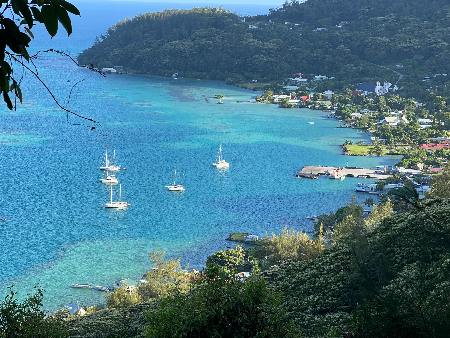

Gambier Islands experience
We entered French Polynesia in the Gambier Islands. This archipelago is the furthest removed from the rest of French Polynesia but even here was the first taste of restrictions to come. Prior to arrival, we had read on various online sources of some anchoring restrictions in regards to the Gambier Islands. The restrictions seemed to revolve around a local who owned an island or an area who does not allow anchoring nearby.
A different one is that a local does not allow anchoring in view of his house. None of these “restrictions” are laws and are not recorded officially anywhere. Instead they are small blurbs in compendiums and guide books and communicated by local yachting community supporters. In one conversation we were told not to anchor in an area or we would have a “negative encounter” with a local person. Not what we wanted and we were glad to not have inadvertently blundered into a local restriction. As for negative encounters, reportedly a local assaulted a cruiser a few years back that resulted in partial loss of sight – all for anchoring in an area without an official restriction!
In the Gambiers, how does one know where they can and cannot anchor? The answer – it is not easy. The best (and in our mind only) course of action is to talk to the local yacht services company about where one can and cannot go and combine that with information in guide books and compendiums. The yacht services company is quite clear about which locals are supporters of cruisers and which ones are anti-cruisers. Then with that information, go and anchor, but never think you are firmly in the “right” as at any time a local can impose a new restriction so be prepared to move if asked.
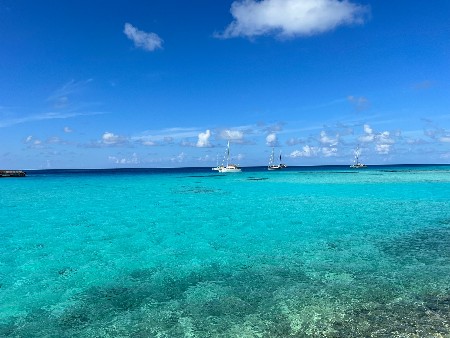

Testing times in the Tuamotus
From the Gambiers we went onto the Tuamotus Island chains. For much of the island groups there are no restrictions but some of the islands have codified local laws governing where you can and cannot anchor.
In the days prior to our arrival we researched heavily on the laws for anchoring in Fakarava. I challenge one to google “Fakarava anchoring restrictions” and see what they can find. It is an absolute dogs breakfast with no clear answers of what is allowed and what is not. Put the challenge of trying to find that information and searching websites while doing so on an internet system that is 3G at best and super super slow.
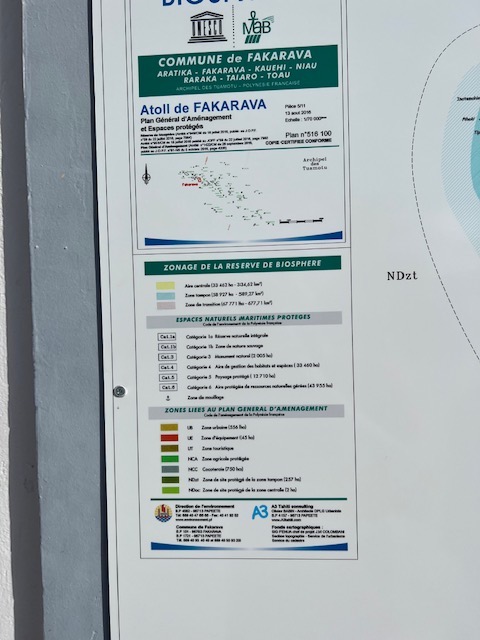

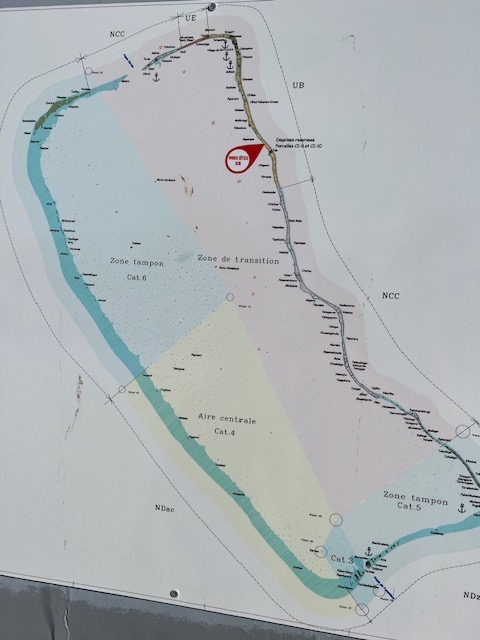

By way of reference, we searched and searched. The Fakarava community website link was not working. The Sailing association had a map that loaded so slowly it was nearly unusable. After a lot of work, we found what we thought was a map that showed the appropriate anchorages.
This became our mistake – we relied on a published map! We arrived in Fakarava in the evening and had intended to take a mooring in front of the town. A friend had been there a few days before and said there had been only him and one other boat for a week and there were lots of moorings available.
Well, when we got there, the situation had changed and the mooring area was full up with many other boats anchoring blindly in coral areas. Dinghys, dive boats and yacht tenders were whipping around the area creating a scene of turmoil and just not our cup of tea.
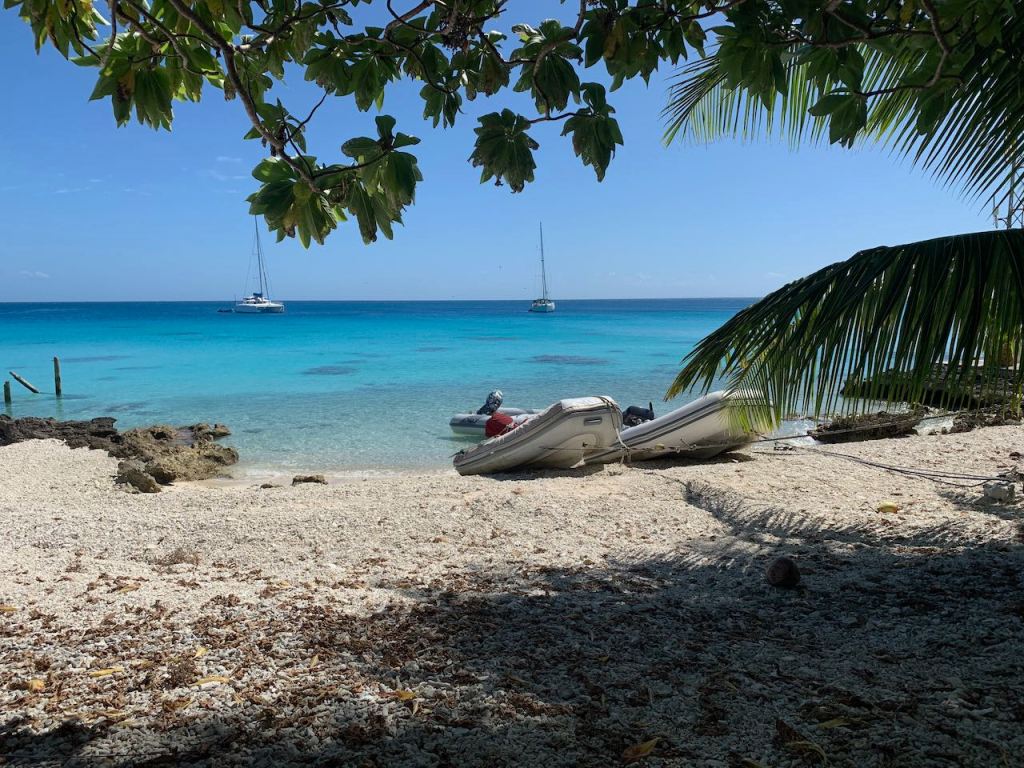

We pulled out our anchorage map and searched around and found an area away from the crowd to anchor. We moved over and set anchoring, finally settling in just before dark, comfortable that we had a quiet, permissible anchorage location.
In the morning we had a steady stream of locals and guide boats coming close to our boat and nearly all were taking pictures. Hmmmmm. What is up with this? About an hour later, a friendly non local resident of the area approached and advised that we were in a closed area and would be fined if we did not move quickly.
Our immediate answer – but we have a map that says it’s open, quickly became lesson number 2. Don’t rely on a map was number 1 and number 2 is don’t say you know more than a resident as to what is open or closed. The resident advised that the area we were in used to be open but had closed a few years before and that updated maps are posted in the town and that we really should have read the maps before we anchored. We kept our mouths shut as we had not even gone to town yet to have a look at the restrictions. We quickly thanked him for his time and pulled up anchor and moved.
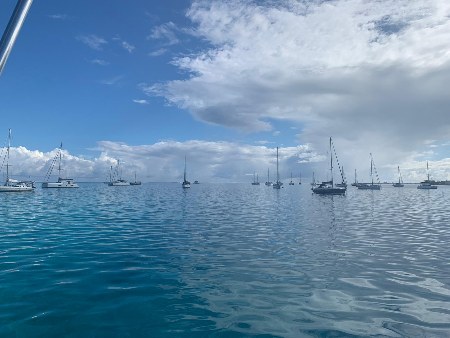

Tahiti research
From Fakarava, we went to Tahiti. Having been away from any supply stores for quite a number of months, we took a spot in the town marina to allow easy access to the shops and re-provisioning facilities. There are also significant anchoring restrictions around Tahiti and most boats seem to end up anchored near marina Taina. Some other areas only allow a limited number of boats. See the images below taken from maps on the Papeete Port website.
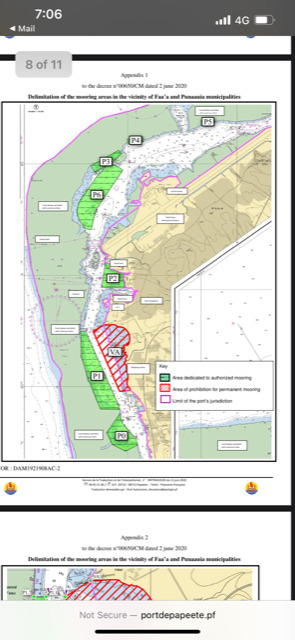

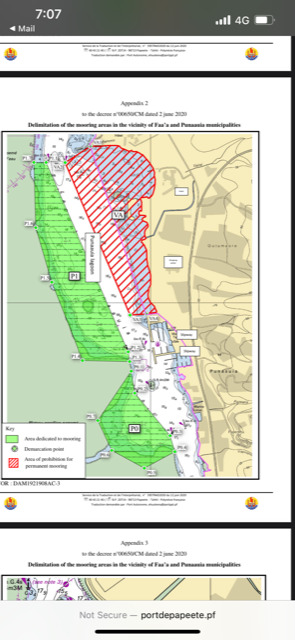

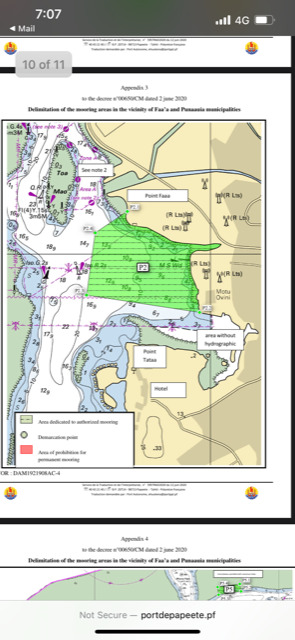

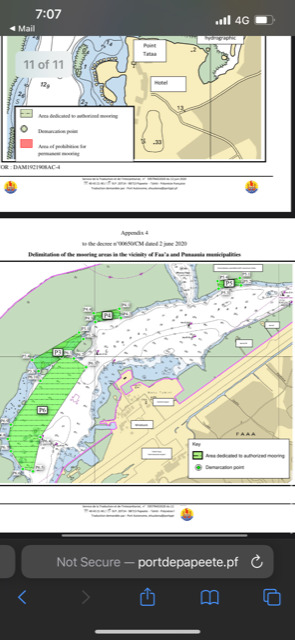

Moorea next
Our next destination was Moorea which is also known for its anchoring restrictions. We wanted to be certain we had everything correct prior to our arrival so while in Tahiti a lot of research was done.
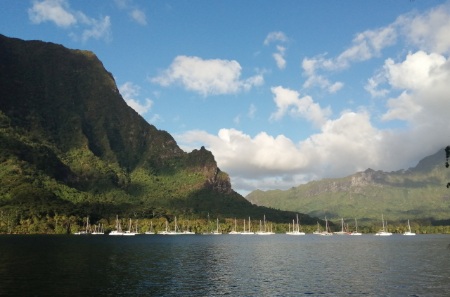

Emails were sent to various government bodies – with no response of any sort. Websites were searched and finally a link was found for the most up to date maps of anchoring restrictions – but of course the link was broken and did not work. An email was sent to the website asking for info and no response was provided. An email was sent to the marina on Moorea. No response received.
One of the cruising compendiums had a map from 2021 showing the restrictions in place as of that date. After our issue in Fakarava with maps being out of date, we wanted to be sure we were okay. A visit to a Tahiti government official’s office was done to ensure we had the most up to date map. The government official emailed a map that was older than the map in the cruisers guide. The map sent by a government official was out of date!
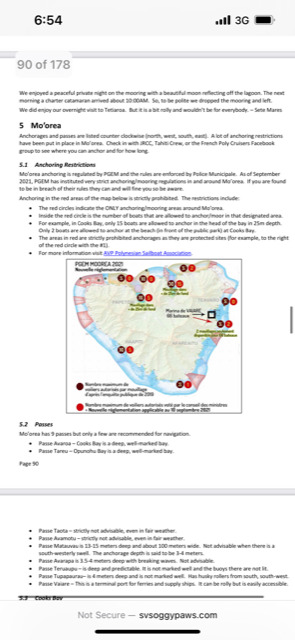

Given all this, we figured we would just use the map from the cruisers guide. It had to be correct – right!? Fingers crossed but as we were to find out, local customs once again over ruled laws.
We first went to Cooks Bay and anchored in the permissible area there. A stunningly scenic anchorage but only 15 boats were allowed to anchor there. We were number 11 and were good. We spent a few days there and were ready to move over to Opunohu Bay. While we were passing the Northeast Corner of the bay, we could see at least 30 boats anchored. In an area where the map says none are allowed. What gives?
Speaking later to other cruisers that we have met, while the anchorage on the NE corner of Opunohu Bay is officially closed, the government officials have said that it is open to anchoring and will take no action with anyone there. We don’t know how much stock to put in this statement but it certainly seems to be a site that local custom has now allowed cruisers to anchor.
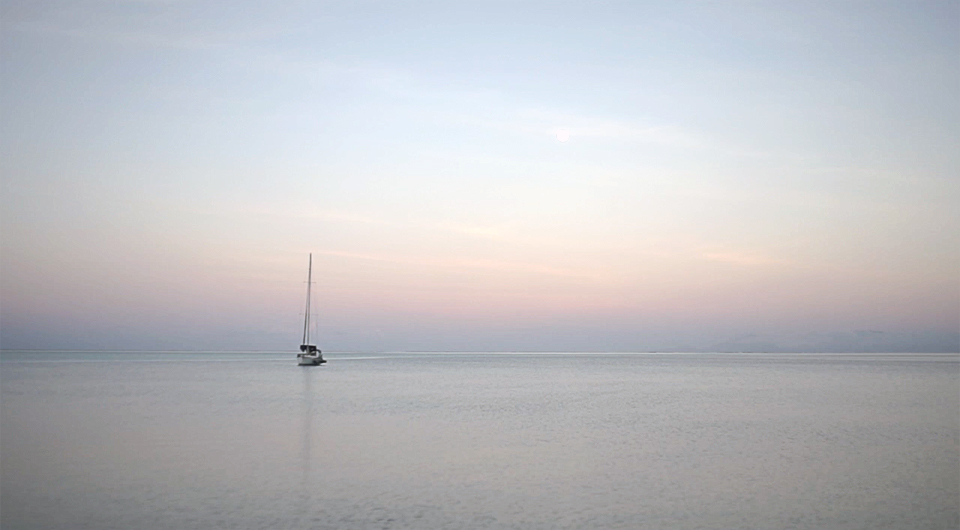

Next stop Huahine
From Moorea we moved onto Huahine. The mapping for Huahine (attached) was easy to find and is clear and explanatory about where one can anchor and where one can moor. Mooring balls are provided and seem to be in good shape. Once again, local customs seems to come into play though where in the mooring field, if all the mooring balls are taken, one is then allowed to anchor – despite an official “anchoring field” being a few hundred meters away.
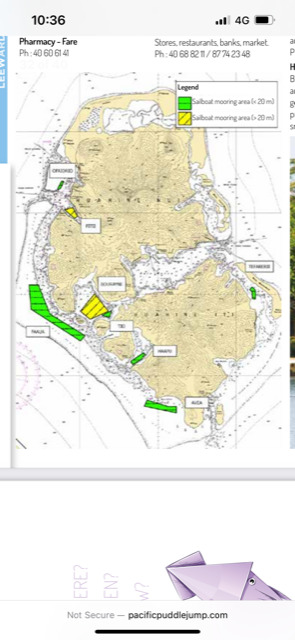

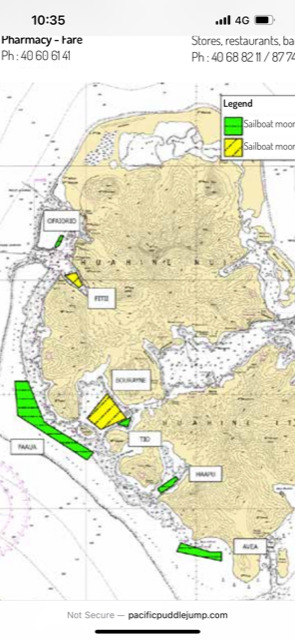

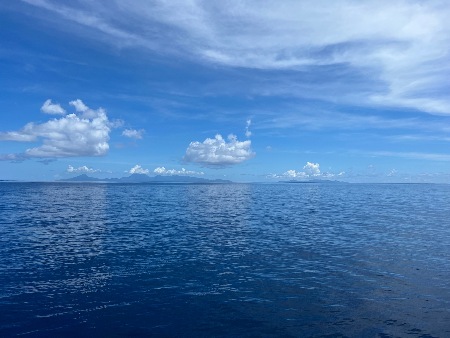

Tahaa
After Huahine we went to Tahaa. Research prior to arrival did not reveal any local restrictions on anchoring – but that doesn’t mean there are not any. We just couldn’t find them. A local charter boat business had a line in their website stating that anchoring anywhere on sand was allowed, so we went with that.
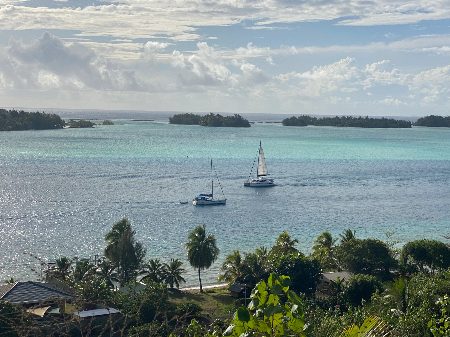

Bora Bora
Ahhh Bora Bora – the home to mooring and anchoring restrictions. We had planned to go for a week. We stayed four days. The restrictions for Bora Bora are well laid out and are available in many publications.
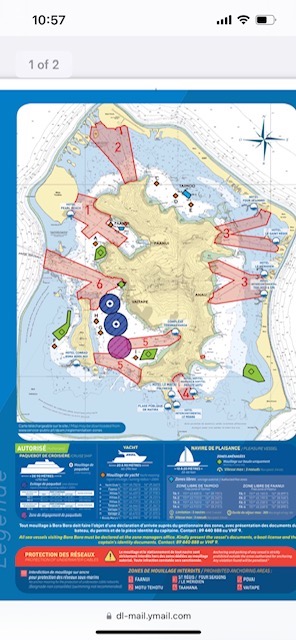

The issue will be as the restrictions change, how will the publications also change? Anchoring is basically prohibited everywhere in Bora Bora – with two small exceptions. There are two anchoring areas that allow a total of five boats each for a maximum of 36 hours. Everywhere else, mooring balls are mandatory and the price is $4000xpf or about US$40/night. Bora Bora Mooring services comes around regularly and one can pay with credit or cash. They will take two bags of trash, twice a week.
In summary
That is a long write up for anchoring in French Polynesia – and we didn’t even get into how to float the anchor chain to avoid “bombie” entanglement.
Our suggestion or advice for any government official reading this – there needs to be one central location for the anchoring restrictions in all of French Polynesia that any cruiser can go to, find the appropriate map and make decisions that suit them. Most cruisers don’t want to do wrong and strive hard to leave a good reputation with the local communities. The current system is broken and will lead to continual erosion of trust between the cruising community and local populations.
Until a central repository is made that one can go to for finding this information, cruisers are left to do a lot of research and approach the situation from a “best guess” standpoint.
Brent Crack and Mary Bevan
SV Knot Safety
………………………………
About the Authors:
Brent Crack and Mary Bevan are two Canadian citizens who are currently sailing across the South Pacific on a Lagoon 400 catamaran SV Knot Safety, heading for New Zealand.
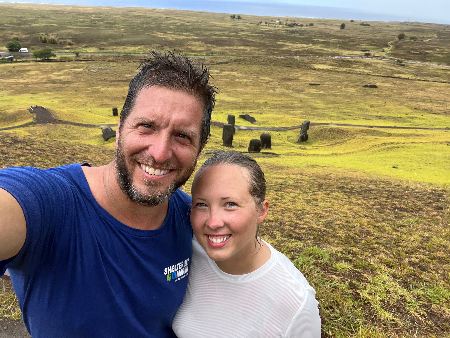
………………………………
The opinions expressed in this article are the author’s own and do not reflect the view of Noonsite.com or World Cruising Club.
………………………………
Other reports from Brent and Mary’s South Pacific Odyssey:
- French Polynesia, Society Islands: The Beauty and Disappointment
- French Polynesia, Tuamotus: Coral Bombies, Snorkelling and Sharks
- French Polynesia – A Warm Welcome to the Gambiers
- Pitcairn Island – Well Worth the Journey
- Rapa Nui (Easter Island) – Nothing Short of Amazing
See more “Off the Beaten Path” articles and resources here.
………………………………
Find out all news, reports, links and comments posted on Noonsite, plus cruising information from around the world, by subscribing to our FREE monthly newsletter. Go to https://www.noonsite.com/newsletter/.
Related to following destinations: Apataki, Australs, Bora Bora, Clipperton Atoll, Fakarava, French Polynesia, Gambiers, Hao, Huahine, Makemo Atoll, Mangareva, Manihi Atoll, Marquesas, Mataura - Tubuai, Maupiti, Moerai - Rurutu, Other Atolls (French Polynesia), Raiatea, Raivavae, Rangiroa, Rapa, Society Islands, Tahaa, Tahiti, Tikehau Atoll, Tuamotus
Related to the following Cruising Resources: Anchorages, Circumnavigation, Cruising Information, Pacific Crossing, Pacific Ocean South, Routing



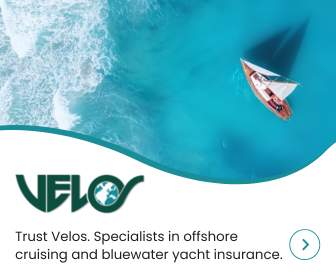
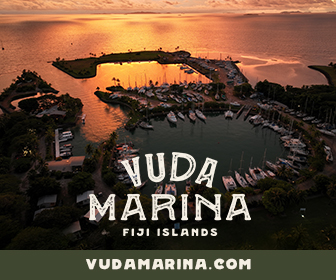
Informative write-up. Cruising there seems like a real mine-field now, but as was said, it is best to listen to locals. Having cruised in FP in 2017, I understand why all these restrictions were put in place.
I smiled when I saw a photo of ours on here! We took that dreamy photo of the boat at anchor in Baie D’Avea on Huahine :)…
Cheers,
Rek, SV Pino
100r.co
Good to hear from you again guys! Will be sure to credit the photo to you.